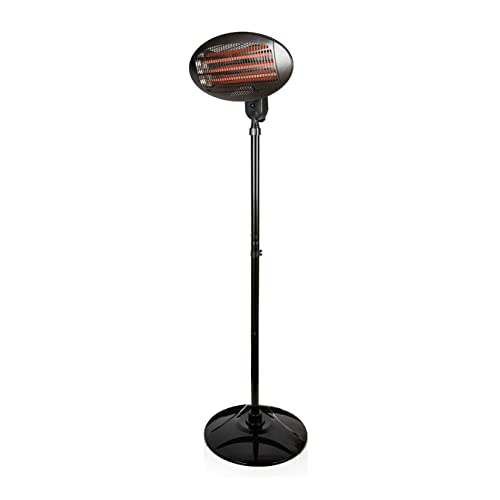How to Choose a Patio Heat Lamp Electric
There are many options available when it comes to heating your patio. Electric heaters are more efficient than propane models which require fueling. They can be heated in a matter of minutes by pressing a button or flicking the switch.
They also don't release gases that could be harmful to health. Some offer adjustable heat settings for varying distances.
Type of Heater
You can relax in your outdoor living space all through the evening and all through the year with the right patio heater. There are several types of heaters for patios, including freestanding propane and natural gas models as well as ceiling or wall-mounted electric radiant heaters. Your choice is contingent on the size of your space, current power sources, and your individual preferences.
The majority of patio heaters use electricity, liquid or natural gas to generate heat. They emit heat through convection heating as well as radiant heating. The heat output of patio heaters is measured in watts, which can be converted to British thermal units (BTUs) to give a comparative. Some models can be adjusted in heat settings to give you more flexibility.
Patio heat lamps incorporate an electric burner on a pole with an open-pored screen that reflects flames and sends heat downwards to warm people, objects and furniture. Some come with an reflector on top of the burner that can be silvered to reduce the amount of heat lost upwards.
Gas patio heaters are the most common heaters for patios. They can heat multiple tables quickly and evenly. These patio heaters are portable and be powered by a propane tank, or they can be plumbed in to your natural gas line. The latter is more convenient and has lower upfront costs, however it requires fuel.
Gas patio heaters are becoming increasingly popular as more homes are equipped with natural gas lines. They are easy to set up, however they require a dedicated and properly functioning gas line to function safely. There are portable natural gas heaters that come with extension hoses which can assist in overcoming this limitation however they can also be a risk of tripping and also a fire hazard when not being used.
Safety
Electric patio heaters can be used in covered areas, as they allow heat to radiate upwards and not outwards. They are not intended for use under an unprotected roof. The heater must be located at least 6" away from the ceiling or 18" away from the wall adjacent to avoid fire hazards.
Gas and propane patio heaters can only be installed in enclosed areas with an enduring cover specifically designed for outdoor use. These covers are usually made of fire-retardant canvas and have an open roof that can be closed. These types of patio heaters have safety concerns relating to the fumes and flames they create. They should be placed away from items that ignite like chairs and curtains.

Follow the guidelines and safety measures of the manufacturer when installing the patio heater or heat lamp. Be sure to choose the one with UL and CSA certifications. Also, read the owner's guide thoroughly. Be extra cautious around children and pets and make sure the heater isn't near them when it's in operation. Some free-standing patio heating devices such as EUROM's come with an automatic tipping safety that shuts the device off if it falls.
If your patio heater runs on natural gas lines it is important to examine the condition of the line on a regular basis and to have it tested for leaks by a certified professional. If the line requires to be replaced, be certain to get a licensed plumber. A professional will be in a position to determine if the line needs to be connected to an underground pipe or not. top rated electric patio heaters can also make sure that the heater in the patio is connected to an outlet that is GFCI-rated (ground fault circuit interrupter) to safeguard against electric sparks and fires.
Installation
The height at which a patio heater is positioned determines how much heat it will radiate into the area. The heater should be positioned away from any surfaces such as plastic and wood that could deform. Depending on the heater model you may choose to mount it on a structure or wall using conventional mounting brackets. Certain models come with soft starters that reduces the maximum current to safeguard your circuits.
